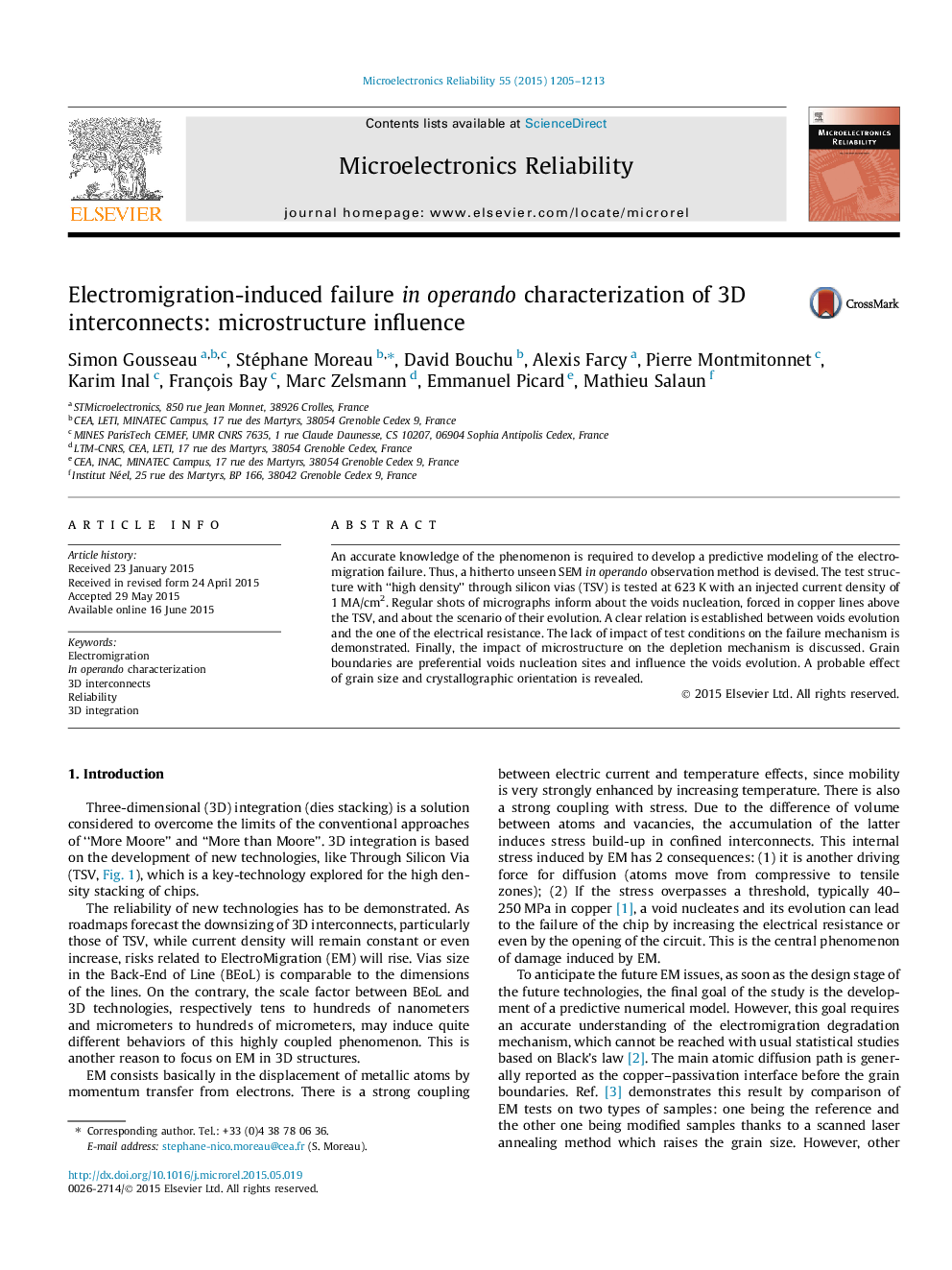| Article ID | Journal | Published Year | Pages | File Type |
|---|---|---|---|---|
| 544724 | Microelectronics Reliability | 2015 | 9 Pages |
•Electromigration mechanism in 3D interconnects is studied.•Scanning electron microscopy in operando experiments are performed.•Test conditions have no impact on the failure mechanism, in the tested range.•Microstructure role on the phenomenon is investigated.•An analytic model is discussed in regard of experimental observations.
An accurate knowledge of the phenomenon is required to develop a predictive modeling of the electromigration failure. Thus, a hitherto unseen SEM in operando observation method is devised. The test structure with “high density” through silicon vias (TSV) is tested at 623 K with an injected current density of 1 MA/cm2. Regular shots of micrographs inform about the voids nucleation, forced in copper lines above the TSV, and about the scenario of their evolution. A clear relation is established between voids evolution and the one of the electrical resistance. The lack of impact of test conditions on the failure mechanism is demonstrated. Finally, the impact of microstructure on the depletion mechanism is discussed. Grain boundaries are preferential voids nucleation sites and influence the voids evolution. A probable effect of grain size and crystallographic orientation is revealed.
